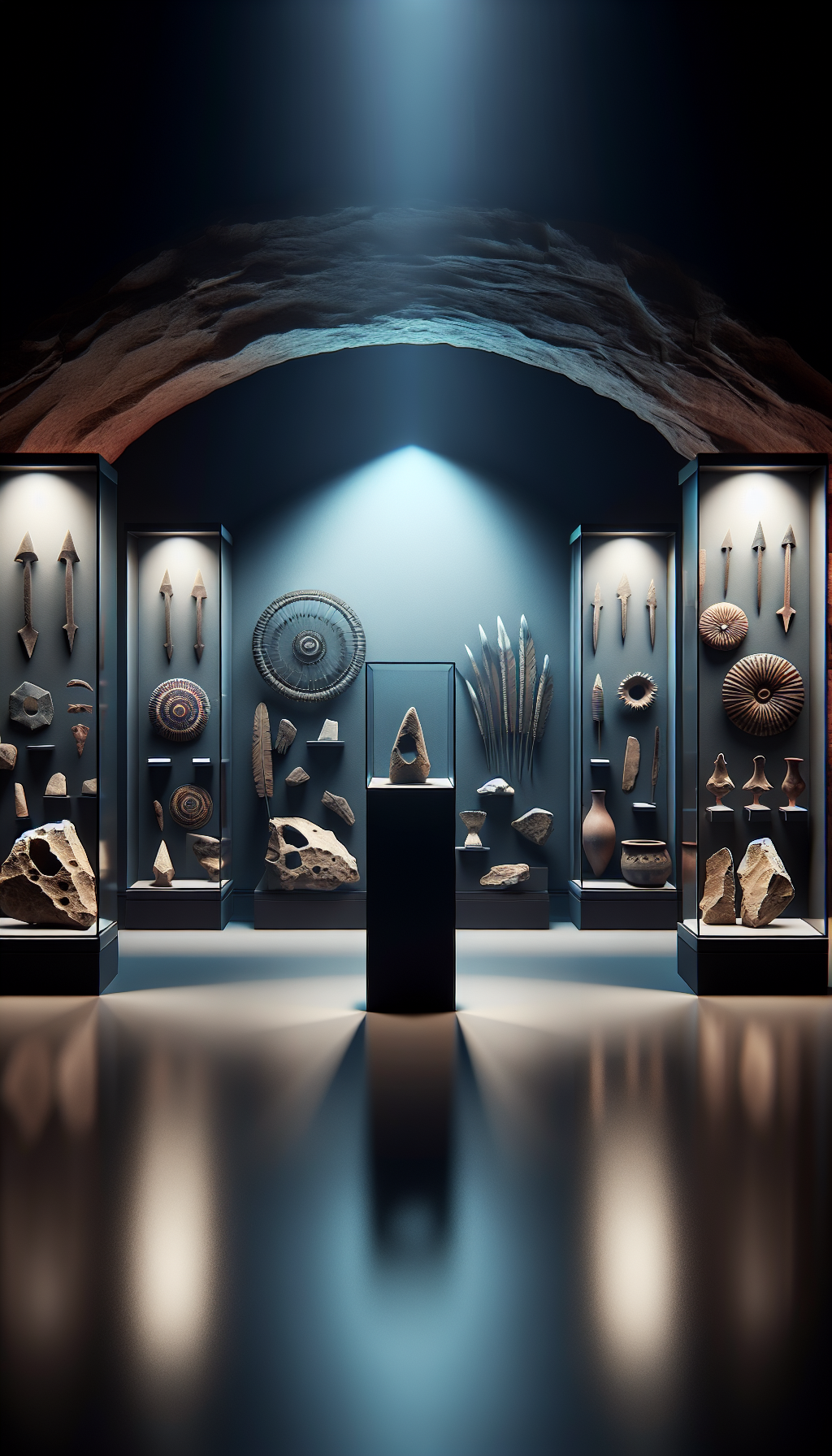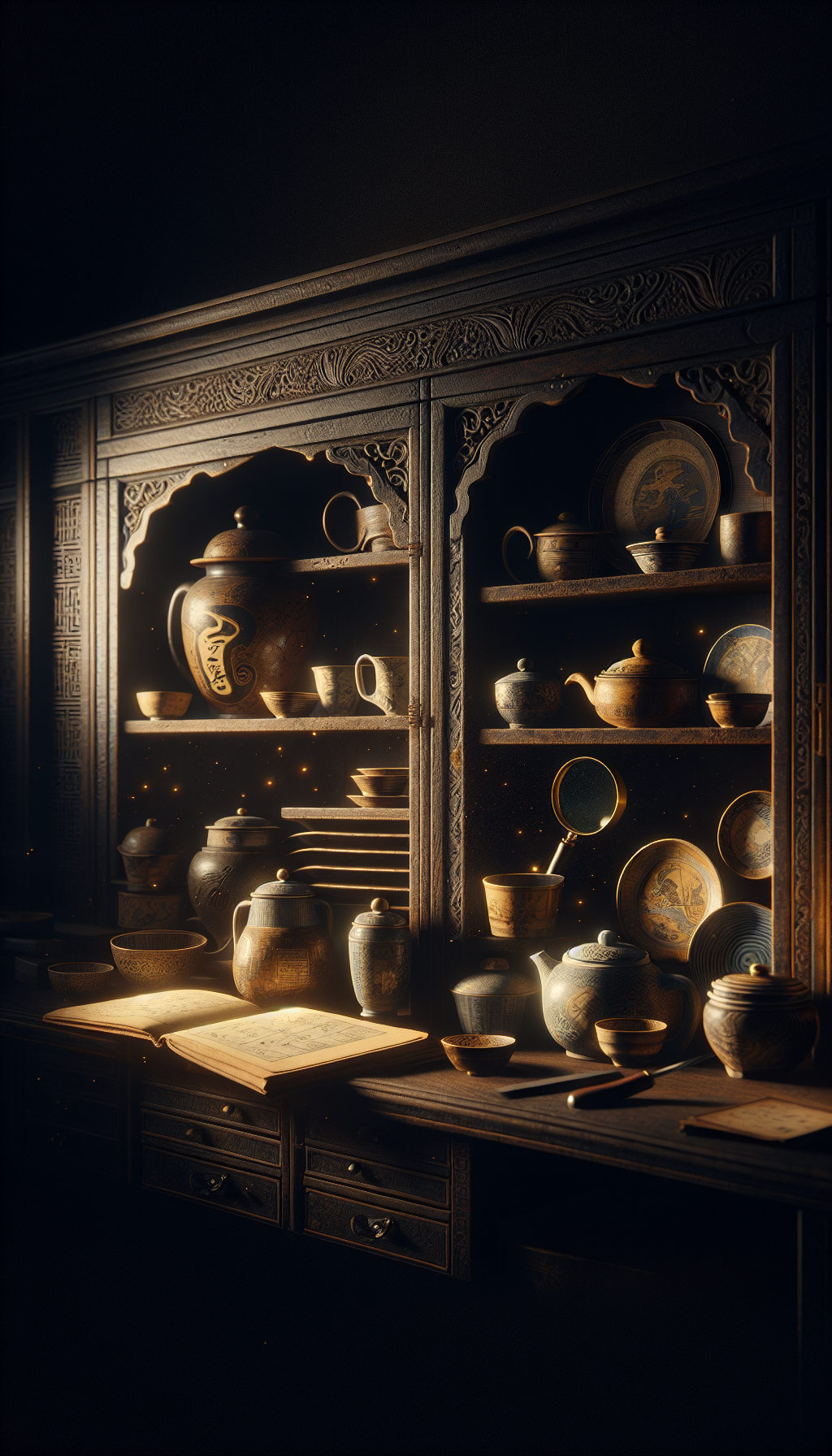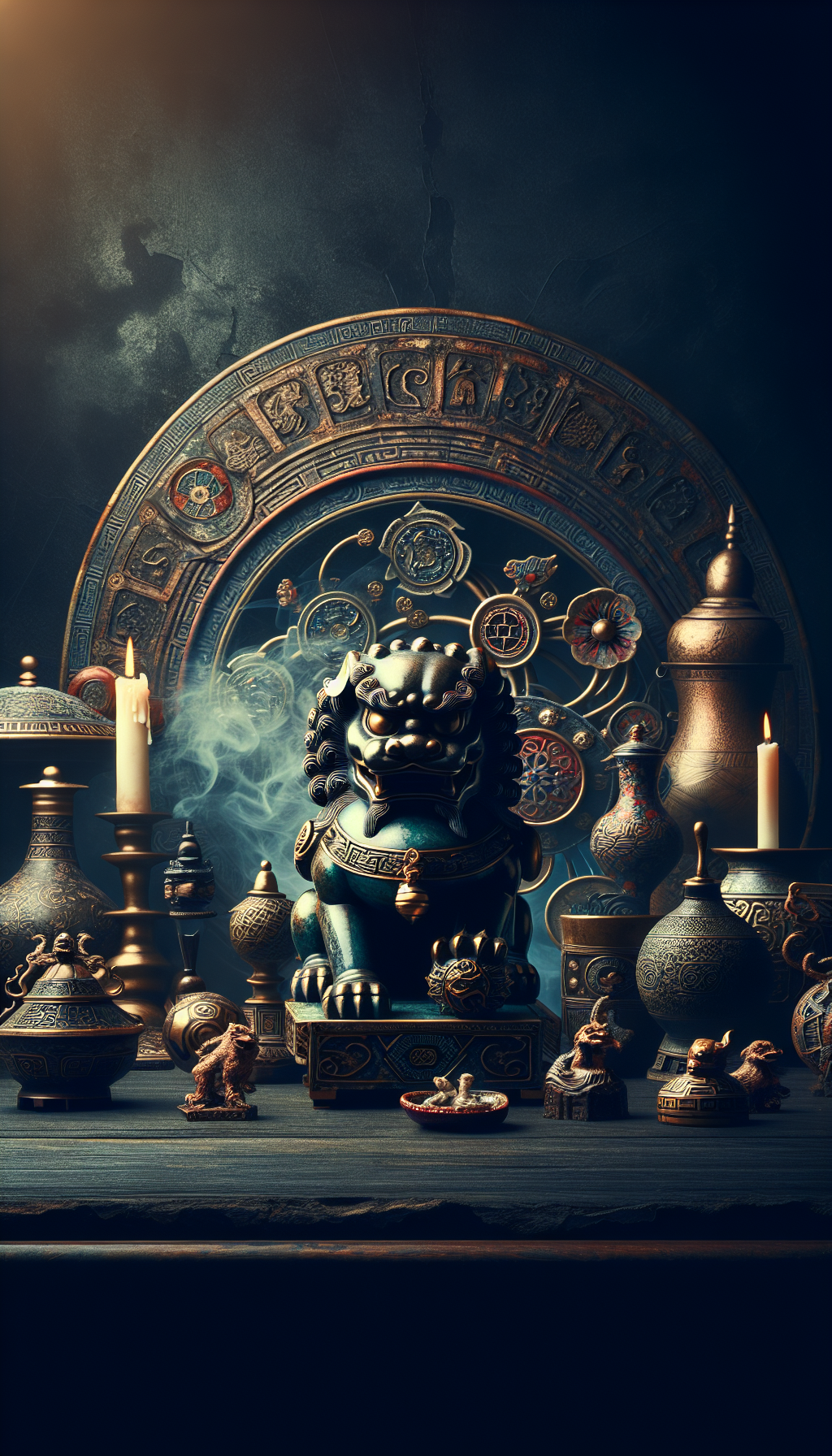Shang Dynasty Sanxingdui Bronze Head Circa 18 19th Century%Ef%Bf%Bc
If you’ve encountered a listing or a label reading “Shang Dynasty Sanxingdui Bronze Head, circa 18/19th century,” you’re looking at an object that claims stylistic descent from one of China’s most astonishing Bronze Age cultures but was likely made much later, often during the Qing dynasty (18th–19th century). For collectors and appraisers, the challenge is to separate:
- genuine late Shang–early Zhou period Sanxingdui pieces (ca. 1200–1000 BCE),
- legitimate historical revivals and scholar’s objects from the 18th–19th centuries,
- and modern replicas or fakes created from the late 20th century onward.
This guide explains what that phrasing typically means, how to evaluate such bronzes, which technical and stylistic features matter, what testing can (and cannot) prove, and how condition and market context shape value.
What that title usually means
Catalog and dealer shorthand can be confusing. “Shang Dynasty Sanxingdui Bronze Head Circa 18/19th Century” typically signals one of two things:
- Shang dynasty style (Sanxingdui type), made in the 18th–19th century. This is the most common interpretation: a Qing revival bronze, produced as a scholarly homage or decorative object.
- Alternatively, the cataloger is uncertain and uses a broad hedge: the piece looks like a Sanxingdui head but dating evidence suggests much later manufacture, so “circa 18/19th century” is offered as a cautionary attribution.
A true Sanxingdui head from the late 2nd millennium BCE would rarely be tradable on the open market today and would be accompanied by exceptional, often archaeological, documentation. Most such objects are protected cultural relics. Consequently, if an item is marketed openly with an 18th/19th-century date in the title, the seller likely intends you to understand it as a period revival or later copy—sometimes honestly, sometimes optimistically.
Sanxingdui vs. later revivals: key visual traits
Sanxingdui, a Bronze Age culture centered in modern Sichuan, is renowned for visionary bronze masks and heads with highly stylized features. Knowing the canonical traits helps you calibrate your eye.
Core traits of authentic Sanxingdui bronze heads (late Shang/early Zhou era):
- Scale and presence: Heads can be life-sized or larger, with assertive sculptural volume. Smaller heads exist but are less common than the imposing masks and monumental elements.
- Facial modeling: Strongly arched eyebrows; almond-shaped eyes with thick lids; straight, prominent nose; compressed, thin lips. Ears are large, triangular or trapezoidal, often with pierced lobes.
- Headdress socket/tenon: Many heads include a top socket or tenon to receive elaborate headdresses; the crown may show a squared opening or raised mortise.
- Surface and inlay: Some examples originally bore gold foil overlays or inlays. Traces of gilding may be staggered, patchy, or embedded along tooling lines, not uniform wash gilding. Inscriptions are unusual compared with Central Plains ritual vessels.
- Casting logic: Sectional, piece-mold techniques consistent with Shang tradition, yielding discreet mold-joint lines and logic in undercuts.
By contrast, 18th–19th-century revivals and later replicas often show:
- Compressed scale: Tabletop-friendly sizes (10–25 cm) predominate in Qing and later reproductions, although larger copies exist.
- Stylization drift: Features become more symmetrical, “prettified,” or regularized; eyelids might lose the tension seen in authentic heads. Protruding, tubular eyeballs—more characteristic of Sanxingdui masks—are sometimes mismatched onto heads in modern fantasy pieces.
- Surface finish: More even, tactilely smooth surfaces; signs of file work or abrasive dressing; polishing that rounds high points uniformly.
- Decorative license: Added motifs, borders, or combinatory features from other bronzes (taotie, leiwen) that don’t typically appear on Sanxingdui heads.
Remember: stylistic connoisseurship is necessary but not sufficient. It must be corroborated with material, technical, and contextual evidence.
Materials, casting, and patina diagnostics
Differentiating Bronze Age originals from 18th–19th-century revivals (and modern fakes) rests heavily on technical observation. The following diagnostics carry weight during appraisal.
Metal composition:
- Early Chinese bronzes: Primarily copper with tin; variable, often significant lead content—Sanxingdui can exhibit relatively high lead enabling large castings. Zinc should be at trace levels only. Widespread use of brass (copper-zinc alloys) is a later phenomenon.
- 18th–19th-century revivals: Often still bronze (copper-tin-lead) but alloy recipes vary; brass may appear, especially in 19th-century and later export objects.
- Red flag: XRF showing zinc above trace levels (for example >1–2%) is a strong indicator of post-antique manufacture. Conversely, “antique-like” alloys can be duplicated, so composition alone does not prove age.
Casting method and tool traces:
- Sanxingdui tradition: Sectional piece-mold casting with clear logic in how complex forms were broken down. Expect mold seam evidence aligned with form, occasional core support vestiges, and micro-porosity patterns consistent with ancient casting.
- Qing and later: Lost-wax casting becomes more common; seam lines may be absent or illogical; interiors can show investment residues inconsistent with ancient cores; uniform wall thicknesses and modern finishing tools (rotary abrasives) may be visible under magnification.
Patina and corrosion:
- Archaeological patina: Layered and complex. Expect an inner cuprite layer (red), overlaid by malachite (green) and azurite (blue), with accreted soils/minerals. Corrosion penetrates into microcracks; colors vary across protected vs. exposed zones; edges of breaks might show a progression from metallic core to cuprite to carbonates.
- 18th–19th-century surface: Naturally developed brown to olive-brown to dark green patination from handling and environment, often smoother and more even, with honest wear on protrusions.
- Artificial patina (modern fakes): Overly uniform green; granular “frost”; chemical smell; patina that flakes in sheets or reveals bright yellow brass beneath; miscolored recesses all equally green; “sprinkled” mineralized grit that doesn’t integrate with corrosion layers.
Adhesions and residues:
- Authentic archaeological finds may retain compacted soil in crevices and core material on interior surfaces—fine, dense, and mechanically tenacious.
- Modern accretions often brush away too readily or look cosmetically applied.
Always combine multiple indicators: no single feature is decisive.
Testing, provenance, and legal considerations
Testing that helps:
- XRF (X-ray fluorescence): Non-destructive alloy screening. Useful to detect zinc, assess lead/tin levels, and compare with known ranges. Beware surface-contamination effects; take multiple readings on cleaned micro-areas.
- Lead isotope analysis: Invasive but powerful. Can correlate lead sources with known ore fields (e.g., Sichuan vs. other regions). Requires expert interpretation and comparative datasets.
- Metallography/microstructure: Small sampling to study dendrites, segregation, and corrosion products; aligns with expected ancient or later microstructures.
Tests often misunderstood:
- Thermoluminescence (TL): Not applicable to metal. It dates fired ceramics. It may apply only to embedded core fragments if present and accessible—rare in market settings.
- Radiocarbon: Applicable to organic remains; seldom relevant to solid bronzes unless encapsulated organics are preserved.
Provenance:
- Robust pre-1970 (and ideally pre-1949) provenance improves credibility and reduces legal risk. Expect named collections, old sale catalog citations, field photos, or early museum loans for any claim near antiquity.
- Vague “old European collection” statements are weak. Seek paperwork, dates, and images.
Legal and ethical context:
- Authentic Sanxingdui-period bronzes are usually subject to stringent cultural property laws and export restrictions. If something appears plausibly ancient, treat due diligence as essential. The lack of verifiable provenance for an allegedly ancient head is itself a significant negative.
Condition and conservation
Condition directly affects both authenticity judgments and value.
Typical observations:
- Ancient heads: Fracture edges often rounded by corrosion; patina encrustation varying by microclimate; possible chloride activity (bronze disease) but in mature, localized forms; patches of gold foil remnants in creases if originally applied.
- 18th–19th-century: Honest wear; smoother patinas with micro-scratches; occasional stable casting flaws; less mineral encrustation.
- Overcleaning: Stripping to raw metal or brightened high points via buffing diminishes historical surface and value. Re-gilding or recent lacquer coatings can be reversible but complicate analysis.
Conservation notes:
- Stabilize active bronze disease (pale green powdering that recurs) promptly using accepted conservation protocols. Avoid DIY acid or ammonia treatments.
- Never attempt to “improve” patina for resale. Artificial patination is readily detected and devalues the piece.
- Document every intervention for future appraisers.
Market and catalog language
Reading between the lines:
- “Shang dynasty style, Sanxingdui type, Qing dynasty (18th/19th century)” = a revival piece, not ancient.
- “After the Sanxingdui” or “in the manner of” = a later copy or homage.
- “Sanxingdui culture, late Shang/early Zhou” with strong provenance and scholarly literature citations = a serious, potentially restricted object.
Value ranges:
- Authentic Sanxingdui bronzes are exceedingly rare on the open market and, when tradable, can command very high prices—but legal and ethical constraints dominate.
- 18th–19th-century revival bronzes vary widely by quality, scale, patina, and provenance—from modest sums for small decorative copies to significant prices for exceptional scholar’s objects with old collections.
- Recent replicas and tourist pieces have modest decorative value.
As always, condition, documentation, and expert consensus set the ceiling.
Quick Appraisal Checklist
- Verify the claim: Does the catalog explicitly date it to the 18th/19th century (revival) or to ca. 1200–1000 BCE (ancient)?
- Measure and weigh: Note scale, wall thickness, and mass. Compare with known examples.
- Inspect casting: Look for piece-mold logic, seam evidence, or lost-wax uniformity; check interiors for core residues.
- Test alloy: Commission XRF. Watch for zinc levels and alloy ratios.
- Study patina: Seek layered, variegated corrosion vs. uniform green; examine breaks and recesses under magnification.
- Check features: Ears with piercing, top socket/tenon, eyebrow/eye modeling; consistency with Sanxingdui canon.
- Review provenance: Demand dates, names, documents, and images; be wary of gaps.
- Consider legality: If it could be ancient, consult cultural property specialists before any transaction.
- Avoid cleaning: Do not alter surfaces before expert examination.
- Consult experts: Seek opinions from specialists in early Chinese bronzes and, if possible, lab analysis.
Frequently Asked Questions
Q: Can an 18th–19th-century Sanxingdui-style head be valuable? A: Yes. Well-cast Qing revival bronzes with good patina and early provenance can attract serious interest, especially if they reflect accurate Sanxingdui features and scholarly taste. Quality and documentation are decisive.
Q: Is zinc content a deal-breaker? A: High zinc (indicating brass) strongly suggests post-antique manufacture. However, low zinc alone doesn’t prove antiquity—some modern makers use bronze alloys without zinc. Interpret XRF in context with casting traits, patina, and provenance.
Q: Did Sanxingdui bronzes use lost-wax casting? A: The dominant tradition in Shang-period China, including Sanxingdui, is sectional piece-mold casting, often with complex cores. Some hybrid practices exist, but a clean lost-wax profile on a “Sanxingdui” head is more likely a later method.
Q: Are traces of gold a sign of authenticity? A: They can be, since some Sanxingdui heads and masks bore gold foil. But modern and Qing artisans also gilded pieces. Look for irregular, embedded remnants along tooling lines rather than uniform, recent gilding; corroborate with other evidence.
Q: Should I buy a piece with “in the manner of Sanxingdui” in the description? A: Treat it as a later homage unless supported by robust evidence. If the goal is decorative enjoyment, buy what you love at a fair price. If you aim for historical significance, require rigorous testing and provenance and be mindful of legal considerations.
Bottom line: A listing titled “Shang Dynasty Sanxingdui Bronze Head Circa 18/19th Century” almost always points to a later revival, not a Bronze Age original. Distinguish by studying stylistic fidelity, casting logic, alloy composition, and true patina—then weigh provenance and legal context. With disciplined method and the right expertise, you can value these compelling objects accurately and ethically.




